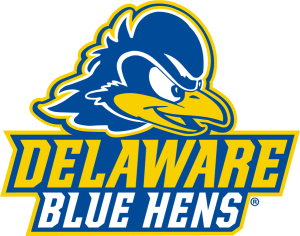 The University of Delaware is adding NCAA women’s hockey starting in the 2025-26 season. The Blue Hens will become the 45th DI women’s hockey program and will join College Hockey America (CHA). It will be the first NCAA hockey program in the state of Delaware.
The University of Delaware is adding NCAA women’s hockey starting in the 2025-26 season. The Blue Hens will become the 45th DI women’s hockey program and will join College Hockey America (CHA). It will be the first NCAA hockey program in the state of Delaware.
The university has offered women’s ice hockey as a club sport since 2003 and will continue to have a club team in 2024-25 and beyond. The club team has earned a top-10 national ranking in each of the last 10 seasons.
The move is related to the athletic department’s announcement this week that it had been accepted for full membership in Conference USA. The transition from FCS to FBS football offered an opportunity to add additional scholarships for female athletes at Delaware.
“We knew coming in that when we were going to make this decision on the football side, we were absolutely going to be looking to add a female sport and with the work that we’ve done together women’s hockey just made a ton of sense for us,” said Delaware Athletic Director Chrissi Rawak.
Thanks in large part to a feasibility study that was conducted on campus, it became clear to Rawak that adding women’s hockey was a smart decision for the university.
Delaware already has two ice arenas on campus, which means the institution bypassed many of the hurdles and difficulties that can come from adding ice hockey to their NCAA portfolio. The Blue Hens will play their home games at Fred Rust Arena.
“We’ve always highlighted them as a school that could add NCAA hockey because of the existence of the facilities and also the proximity to other programs so they can easily find other schools to play,” said Mike Snee, College Hockey Inc. Executive Director.
Delaware’s location brings women’s college hockey to a somewhat untapped area of the east coast. The closest program is Princeton, 90 miles away. The University of Delaware is just 40 miles from Philadelphia, 60 miles from Baltimore and 90 miles from Washington DC. The yearly DI in DC showcase to bring women’s college hockey to that area shows the need and opportunity. Delaware is only too happy to help fill it.
The feasibility study that led to this decision is funded by the Industry Growth Fund, a joint initiative of the National Hockey League (NHL) and the National Hockey League Players’ Association (NHLPA) and is part of an effort in conjunction College Hockey, Inc., to expand college hockey in NHL markets. Snee estimated that more than a dozen studies have been carried out over the past 10 years. This announcement with Delaware is the product of a feasibility study doing exactly what it was intended to do, he said, which is provide information and opportunity for a school to explore the possibility of adding hockey and gather information without having to make a decision immediately. The institution doesn’t have to know all the questions to ask or logistics to consider and can just find out what would be required for them to add hockey and be successful.
Snee hopes that this announcement is not isolated, but starts conversations about college hockey at more universities and inspires those institutions to reach out to College Hockey Inc. so that the sport can continue to grow.
Rawak said the working with the NHL and College Hockey Inc. was incredibly helpful as Delaware worked to identify the women’s sport that made the most sense for the university to add in which they could be able to compete.
“For the NHL and NHLPA to be willing to invest in this the way they are and the way they continue to it’s so significant to the success in college hockey,” said Snee.
There are a number of ways in which Delaware could have been Title IX compliant after the addition of scholarships that comes with moving the football team to FBS, but Rawak was focused on adding not just another women’s team, but ensuring it was a women’s team that could be successful. Opportunities are important, but she wanted opportunities to win. That stood out to Snee from his first interaction with Rawak.
“From day one, this was never about existing. This was about competing and winning,” he said.
Not needing to build a new facility was the first part, but the feasibility study also showed that Delaware’s recruiting footprint, facilities, location, academic offerings and reputation showed that an NCAA women’s hockey program had an opportunity to grow quickly and be successful.
“We know we’re not going to like the world on fire immediately, but I don’t think it’s going to take long for us to be competitive. I am really incredibly excited about that,” said Rawak.
The athletic department and greater university as a whole generally recruit from Boston down to Virginia. Additionally, there are already student-athletes from 29 different countries playing sports for Delaware. The feasibility study showed the impact international players continue to have on women’s hockey and the fact that the institution is already versed in how to support and enroll those students was just one more piece of the puzzle that made Rawak and the Blue Hens feel like adding women’s hockey was a natural fit for the school.
She believes in trusting the process and the further the conversations went along about women’s hockey, the clearer it was that all the boxes were checked, timing had aligned and this was a no-brainer, she said.
“There’s always a risk. This feels like a really good calculated risk for us to be taking,” Rawak said. “I’m really excited for the sport. I’m excited for this university. I’m excited for this region.”
While women’s hockey came to be the obvious choice for Delaware, Rawak said a bonus factor in making this decision was the support of the Philadelphia Flyers. Delaware and the Flyers will form a partnership, with details being shared on Thursday, February 8 at Wells Fargo Center. The NHL club’s commitment to women’s hockey and women in sports stood out to Rawak.
“Our opportunity for partnership with the Philadelphia Flyers, that’s just an a significant added bonus for us and something that is incredibly exciting,” she said.
CHA Commissioner Michelle Morgan stressed that while there was some serendipity and relative ease to how things aligned with Delaware adding NCAA women’s hockey and joining the CHA, she hopes fans understand the scale of what has been accomplished.
“What [Rawak] and her team have done to get to this point is really seismic,” Morgan said.
From the CHA perspective, adding the Blue Hens made a lot of sense for a number of reasons, but maybe most importantly because adding a seventh team helps protect the league’s status with the NCAA to receive an automatic qualifier bid to the NCAA Tournament at the end of the season.
College athletics are unpredictable and Morgan said adding Delaware helps protect everyone in the conference.
“We are the smallest conference in DI women’s hockey. I think as a leader of a conference, as a commissioner, you always need to have that in the back of your mind. You have to still protect that bid and ensure that the automatic qualifier is not in jeopardy based on size and scope of your membership,” she said.
Morgan, who has been in her position for less than a year, said that when she first spoke with the group from Delaware over the summer, it was clear they had done their homework about the landscape in women’s hockey. Rawak and her team told Morgan and the CHA that the conference’s brand, the hockey, the strength of the programs and the league’s history aligned with what the Blue Hens wanted to accomplish and Morgan agreed.
Adding Delaware made so much sense that the CHA board unanimously agreed to the move.
“This will hopefully afford more opportunities for girls to play college hockey. It’s a great win. It’s a win for everybody,” said Morgan.
The university plans to begin their search for a head coach after the new year.
There will be a press conference to formally announce the program on Monday, December 4 at 10:00 AM ET at Fred Rust Arena on the University of Delaware campus in Newark, Delaware. University President Dennis Assanis, Rawak and Morgan will all be available and the event is open to the public.


